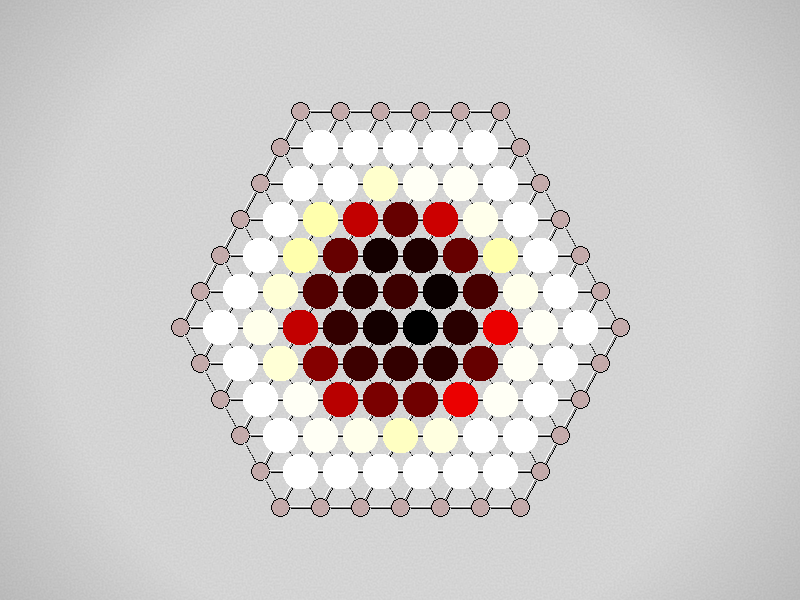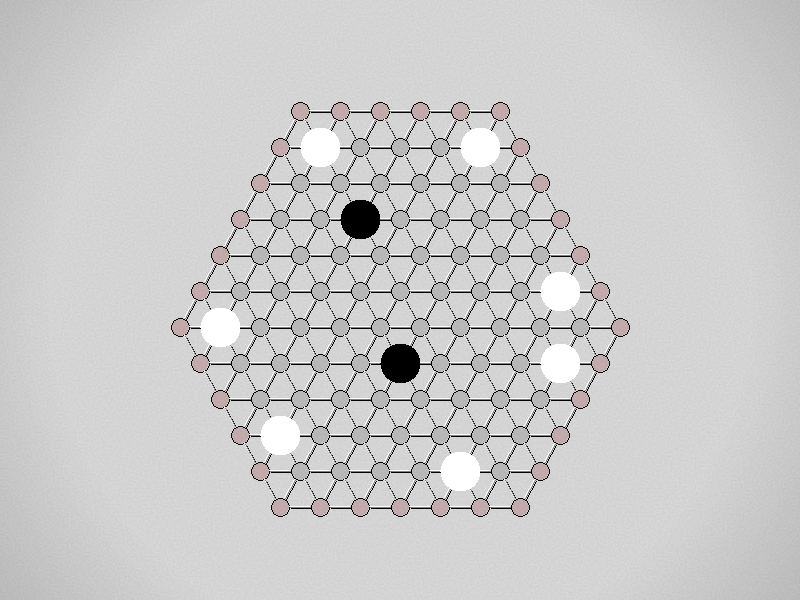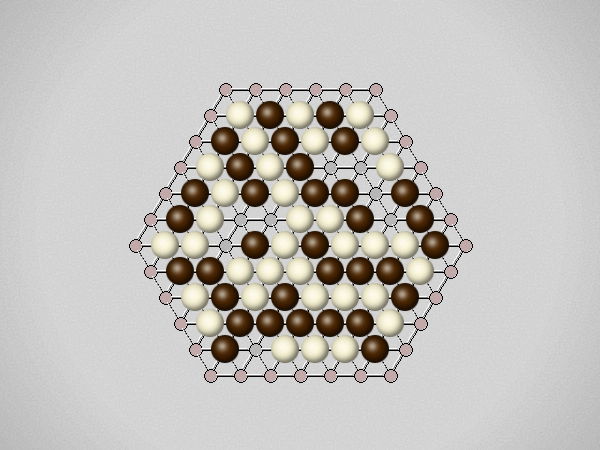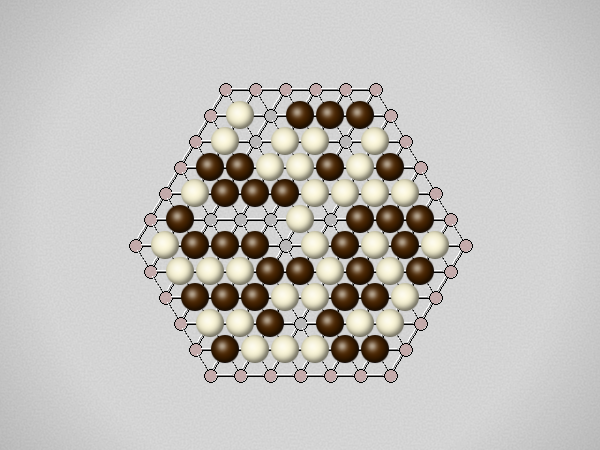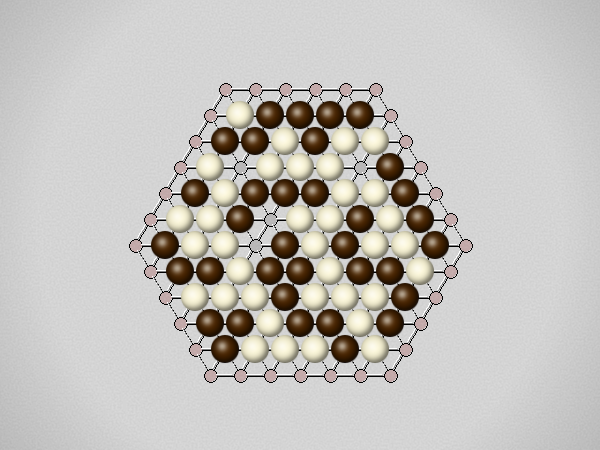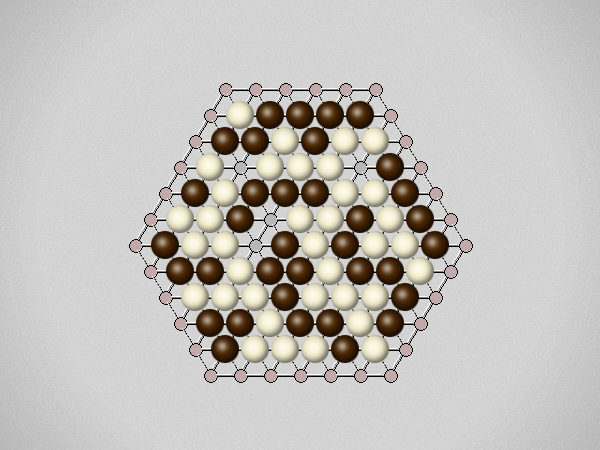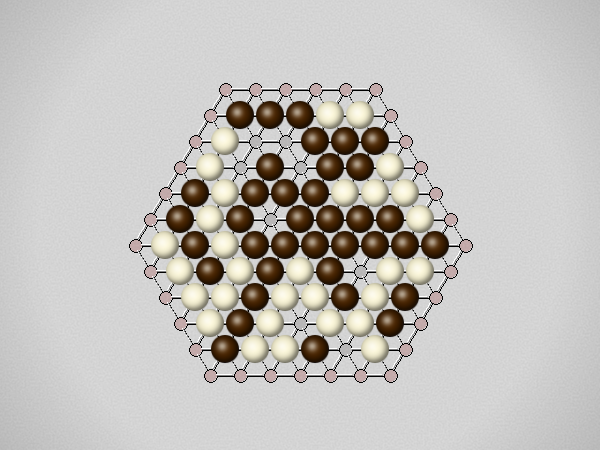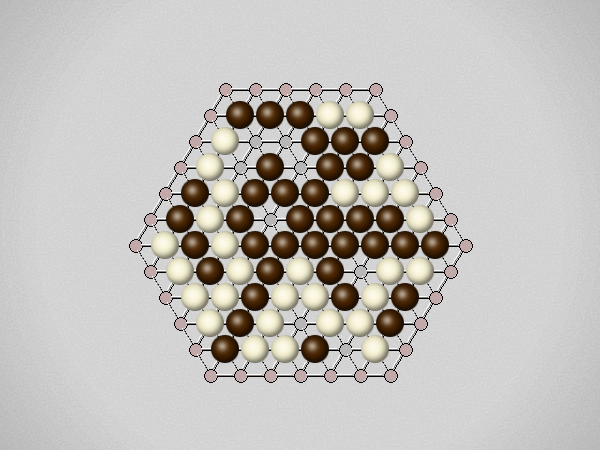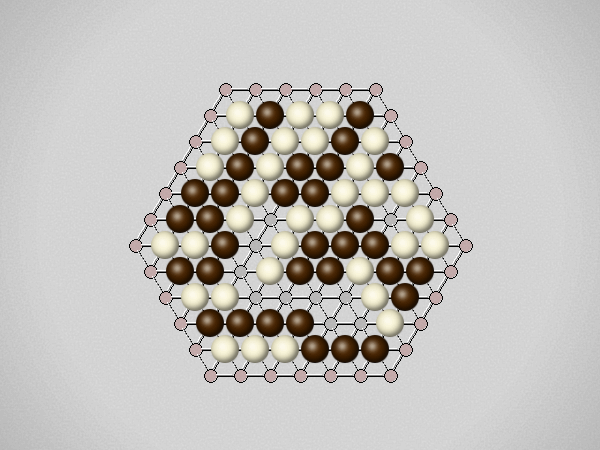Rules

Representative game (in the sense of being of mean length). Wherever you see the 'representative game' referred to in later sections, this is it!
The game begins with one player placing a stone on the board. To avoid giving an advantage to the first player, a pie rule is used, allowing the second player to switch sides at that point. Players then alternate turns, placing a stone on an empty hexagon on the board. Players may pass; the game is over when both players pass.At the end of the game the players count their scores. A star is a group of connected stones belonging to one player that touches at least three partial edge hexagons. The score of a star is the number of edge hexagons it touches minus two. A player's score is the total of all the stars of that player's color. The player with the higher score wins.





